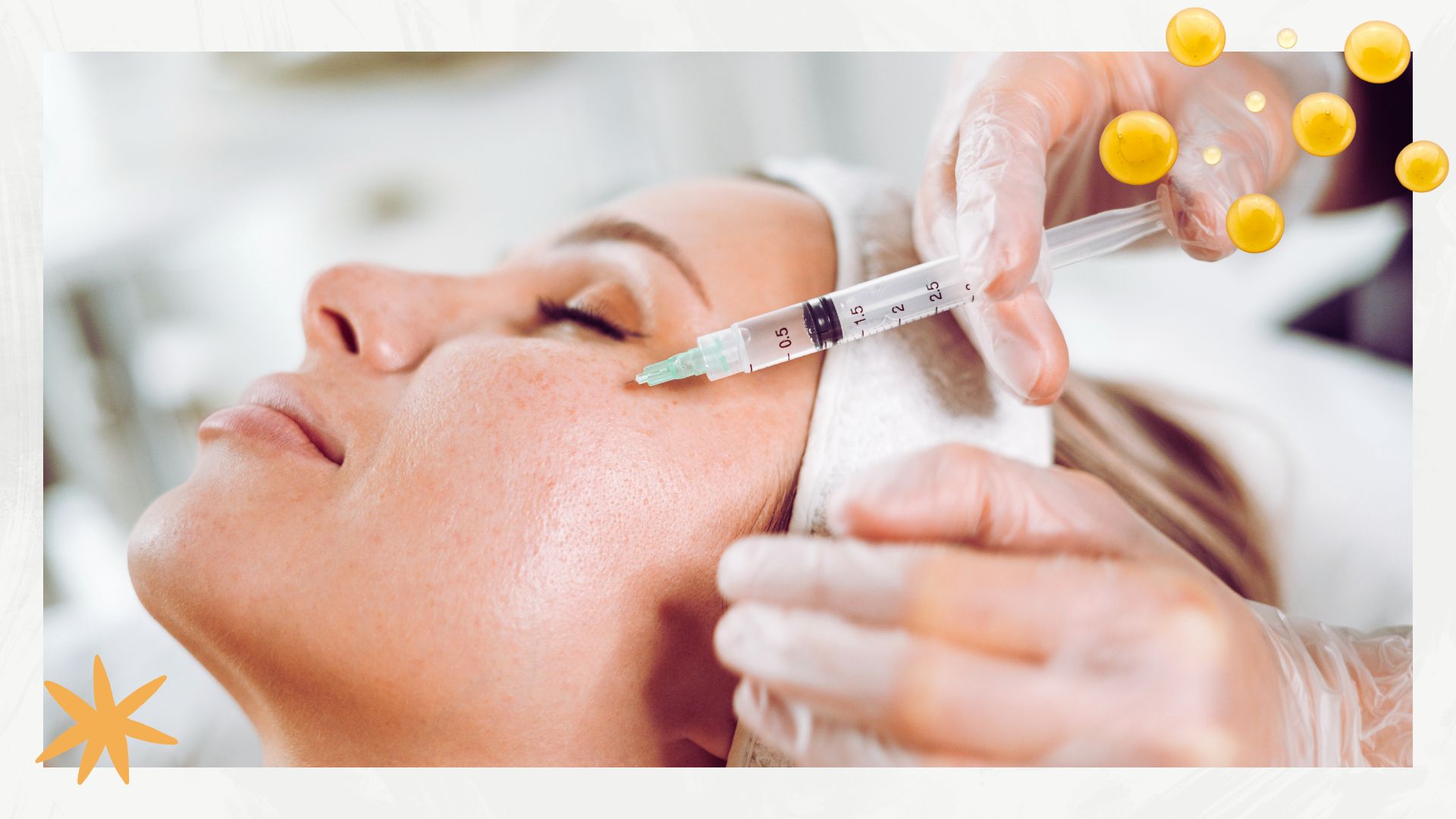Weighing up Botox vs filler, or just curious? Our Beauty Editor asked five experts to explain all
We've got the full rundown on the differences between these two injectable 'tweakments'


Thinking about going under the needle? Or are you simply curious to learn more about injectables? If so, you might be weighing up the pros and cons of Botox vs filler.
The world of facial tweakments is a big, booming business, with treatments like polynucleotides (DNA fragments taken from salmon sperm) gaining traction alongside non-surgical facelifts, microneedling, and skin-tightening lasers.
Not everyone wants to try one of the latest 2025 treatment trends - and that's absolutely fine. But if you are, we understand why you might be more comfortable considering a tried-and-tested, longer-standing tweak like Botox or filler. They’re recognisable names, and you probably know at least one person who’s dabbled in each.
Botox vs filler: doctors explain all
Although they can be spoken about interchangeably (often by people not in the know) Botox and filler are very different. Both are injectables, and both aim to make you look younger, but they work in very disparate ways. To help you weigh up Botox vs filler, we’ve asked four experts to talk us through the specifics.
What is Botox?
“Anti-wrinkle injections, commonly known as Botox (though this is just one of several brand names), work by temporarily blocking the communication between nerves and muscles," explains Dr Sophia Opel, Consultant Plastic and Reconstructive Surgeon, Montrose London.
By relaxing your facial muscles, Botox can soften wrinkles and help prevent new lines from forming. “It’s most commonly used to smooth dynamic wrinkles, the type caused by repetitive movement, like frown lines, crow’s feet and forehead creases,” explains dentist and advanced facial aesthetician Dr Tara Francis.
Think of it like a linen dress – if you keep sitting down, it’s going to keep creasing on the back. Botox is the skincare equivalent of making sure you don’t sit down all day (minus the achy legs).
Sign up to our free daily email for the latest royal and entertainment news, interesting opinion, expert advice on styling and beauty trends, and no-nonsense guides to the health and wellness questions you want answered.
What is filler?
Filler is entirely different from Botox. Cosmetic doctor and trainer Dr Rashpal Singh explains that instead of a protein, filler is a “gel-like substance, most commonly made from hyaluronic acid.” Doing far more than even the best hyaluronic acid serum, “when injected under the skin it restores lost volume, enhances structure, sculpts features and softens lines,” Dr Singh adds.
“Fillers are essentially used to replace or enhance structure and volume.” A good way to visualise it is to picture repadding a cushion that has had its filling flattened over time. Where Botox relaxes the face, filler can redensify it and change its shape.
As we have already mentioned, Botox is a brand name, and there are other muscle-relaxing injectables on the market that work similarly. Filler, however, is a bit more complicated. There are different types of fillers and a myriad of trade names. “Fillers can vary in thickness, flexibility, and longevity,” says aesthetics expert Dr Jennifer Owens. “Softer gels suit delicate areas like lips, while firmer gels give lift and structure to cheeks or jawlines. There are also fillers that contain collagen-stimulating ingredients.”
The four types of filler are…
- Hyaluronic acid (HA) fillers: These are “the most common, versatile and reversible,” says Dr Francis. “They vary in thickness and elasticity, making them suitable for everything from subtle lip hydration to deep structural contouring.” Profhilo is a brand name you’ve probably heard of.
- Calcium hydroxyapatite fillers: “Denser, biostimulatory fillers that also encourage collagen production,” Dr Francis explains. “They are often used in deeper facial folds or for structural support.”
- Poly-L-lactic acid fillers: “Primarily collagen stimulators, working gradually over several months for a subtle, long-term improvement in skin quality and volume.”
- Polymethylmethacrylate (PMMA) fillers: These are less commonly used in the UK. “They’re semi-permanent and generally for more advanced structural support,” according to Dr Francis.
Botox vs filler: Which one is better?
In terms of comparing Botox vs filler, it’s impossible to say whether one is better than the other because they both do entirely different things – it’s like trying to compare a lamp with a bedframe.
For consultant dermatologist Dr Firas Al-Niaimi, choosing between them depends on the area of your face you want to tweak. “You would use Botox if you’re looking for improvements in lines or the upper half of your face for expression lines or crow’s feet. You could use filler if you’re seeking volume in your cheeks, your chin or your lips.”
“There are also specialised applications where Botox has unique advantages, such as jawline slimming, treating a gummy smile and reducing excessive sweating (hyperhidrosis) – all of which are beyond the capabilities of fillers,” advises consultant dermatologist Dr Sina Ghadiri. Masseter Botox can also help "ease jaw pain caused by chronic teeth grinding," according to Dr Opel.
“There are also scenarios where I would use predominantly fillers, such as chin recession, nose contouring, and cheek enhancement.” Non-surgical nose jobs fall under this umbrella.
It’s absolutely not an either-or scenario, though; Botox and filler can work really well in conjunction with each other. “They’re often complementary,” advises Dr Francis. “Used together, they address both movement lines and loss of volume for a balanced, natural result.”
The best practitioners will consider your entire face when discussing what you want to achieve and think of it as a whole, rather than isolated areas. Otherwise, it’s a bit like repainting one room in the house - suddenly it seems like the rest of it needs to be painted too. Treating one concern can often have the unfortunate knock-on effect of creating another one.
Which lasts longer?
A key consideration in Botox vs filler – how long does each last? The effects of Botox “typically last up to six months, after which re-treatment is needed,” says Dr Ghadiri. Exactly how long the effects last will depend on the individual. Anecdotally, people with a higher metabolism tend to find their Botox wears off faster.
“Fillers can last significantly longer, often nine to 18 months or more, depending on the type and placement.” Keep this in mind as you’ll need to factor in top-ups in the ongoing maintenance costs.
Considering trying Botox or Filler?
As a final note, the most important thing with any treatment like this is who performs it. Only have injectables by a medical professional, ideally a physician who specialises in skin and never a beauty therapist or a salon worker.
Do your research. There is never any emergency cosmetic treatment, take your time and investigate who you're going to see, go to several people or several clinics.
Be wary of special offers, chains with two-for-one deals, or persuasive staff. If you feel under any pressure at all, walk away.
For more information, and to search for GMC registered doctors and dermatologists, visit gmc-uk.org
Jess Beech is an experienced fashion and beauty editor, with more than eight years experience in the publishing industry. She has written for woman&home, GoodtoKnow, Now, Woman, Woman’s Weekly, Woman’s Own and Chat, and is a former Deputy Fashion & Beauty Editor at Future PLC. A beauty obsessive, Jess has tried everything from cryotherapy to chemical peels (minus the Samantha in Sex and The City-worthy redness) and interviewed experts including Jo Malone and Trinny Woodall.
You must confirm your public display name before commenting
Please logout and then login again, you will then be prompted to enter your display name.
